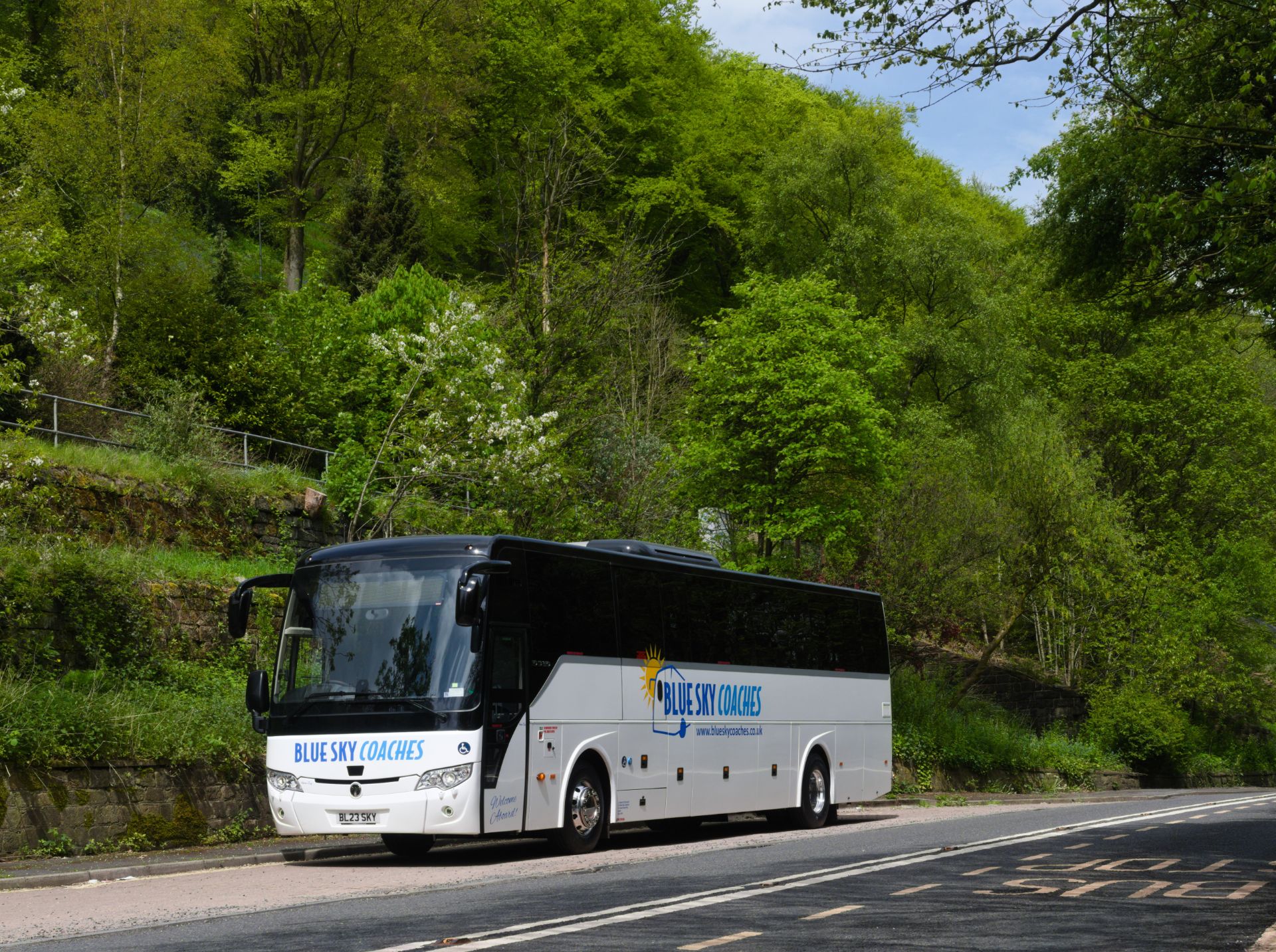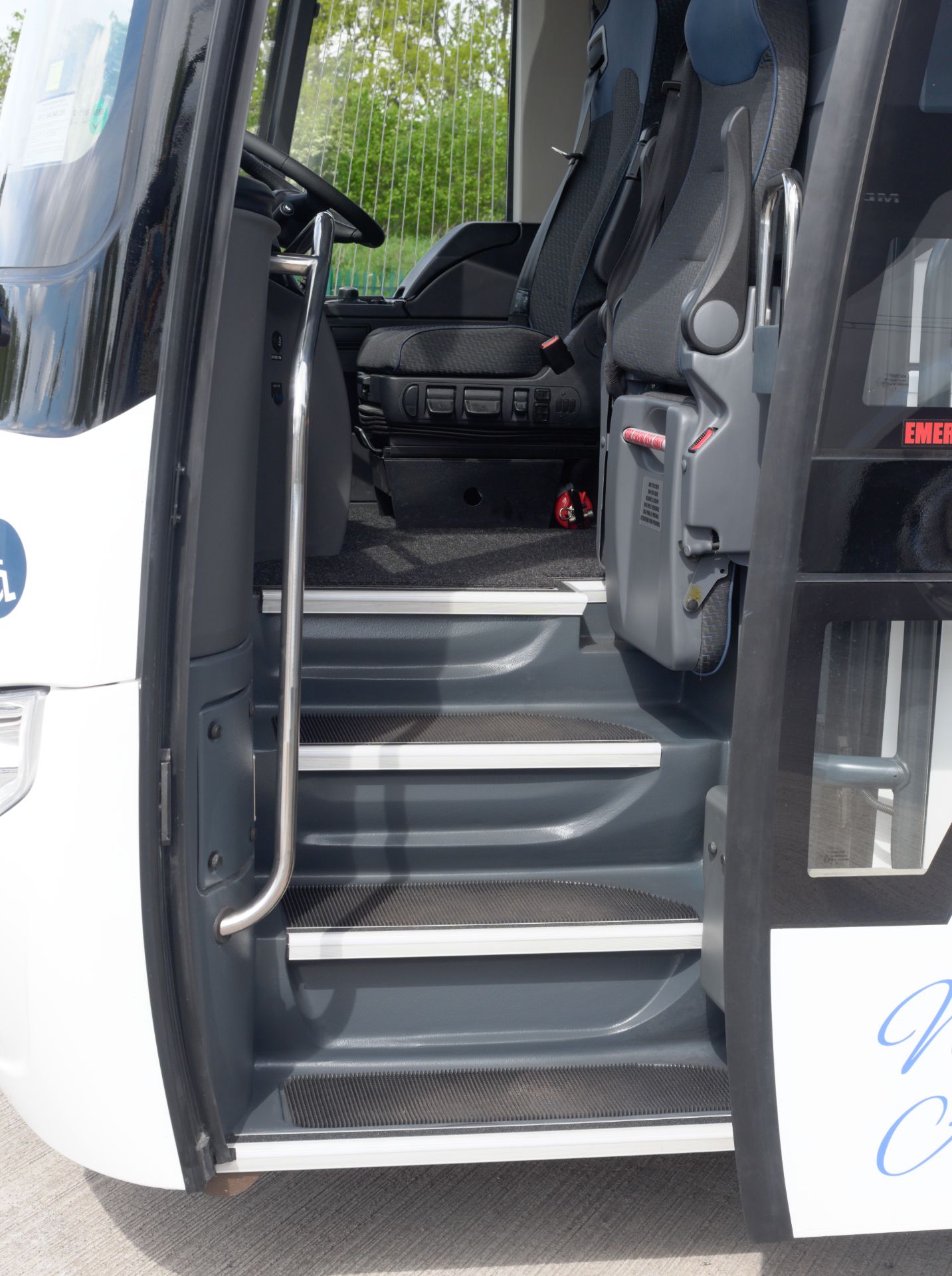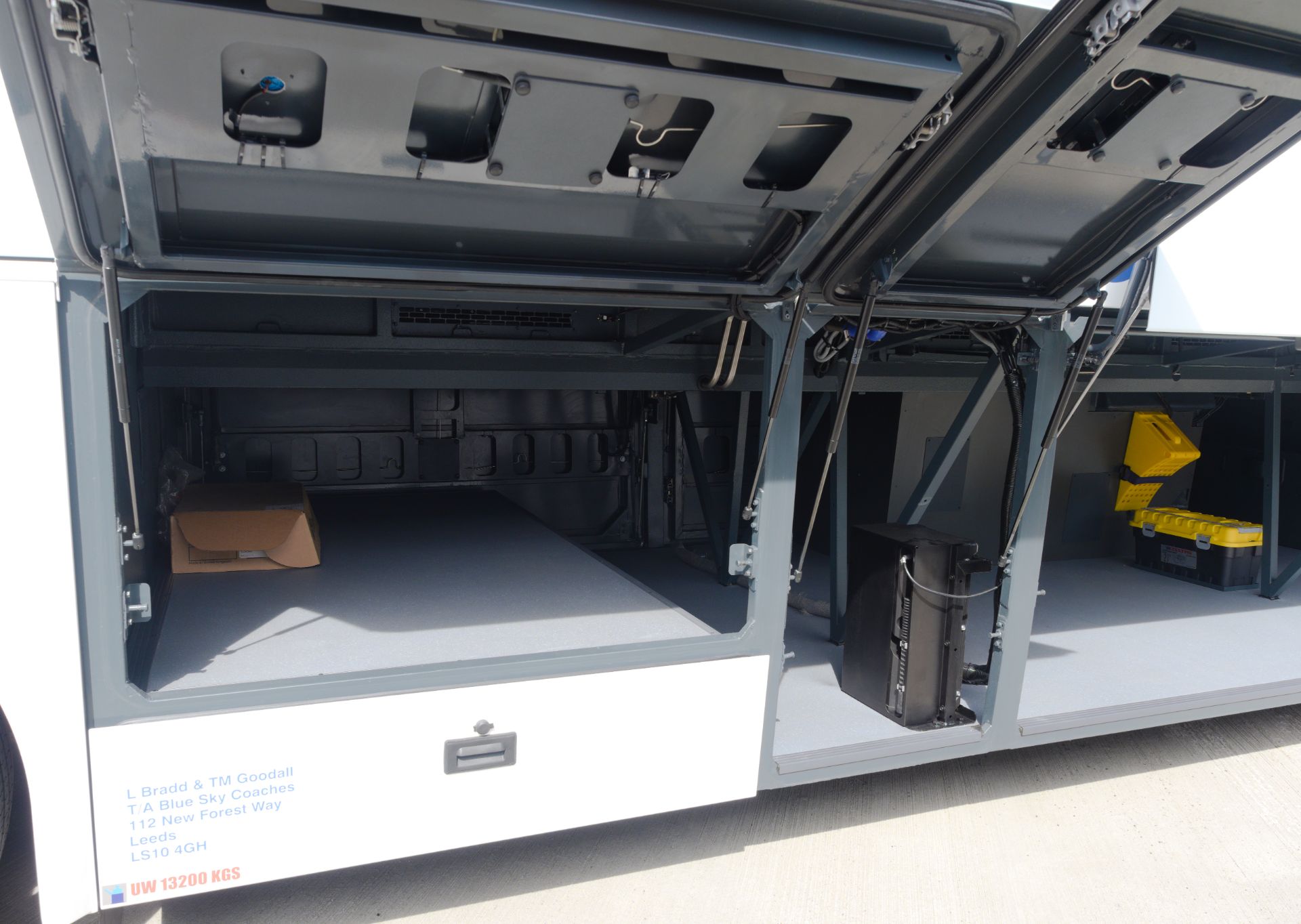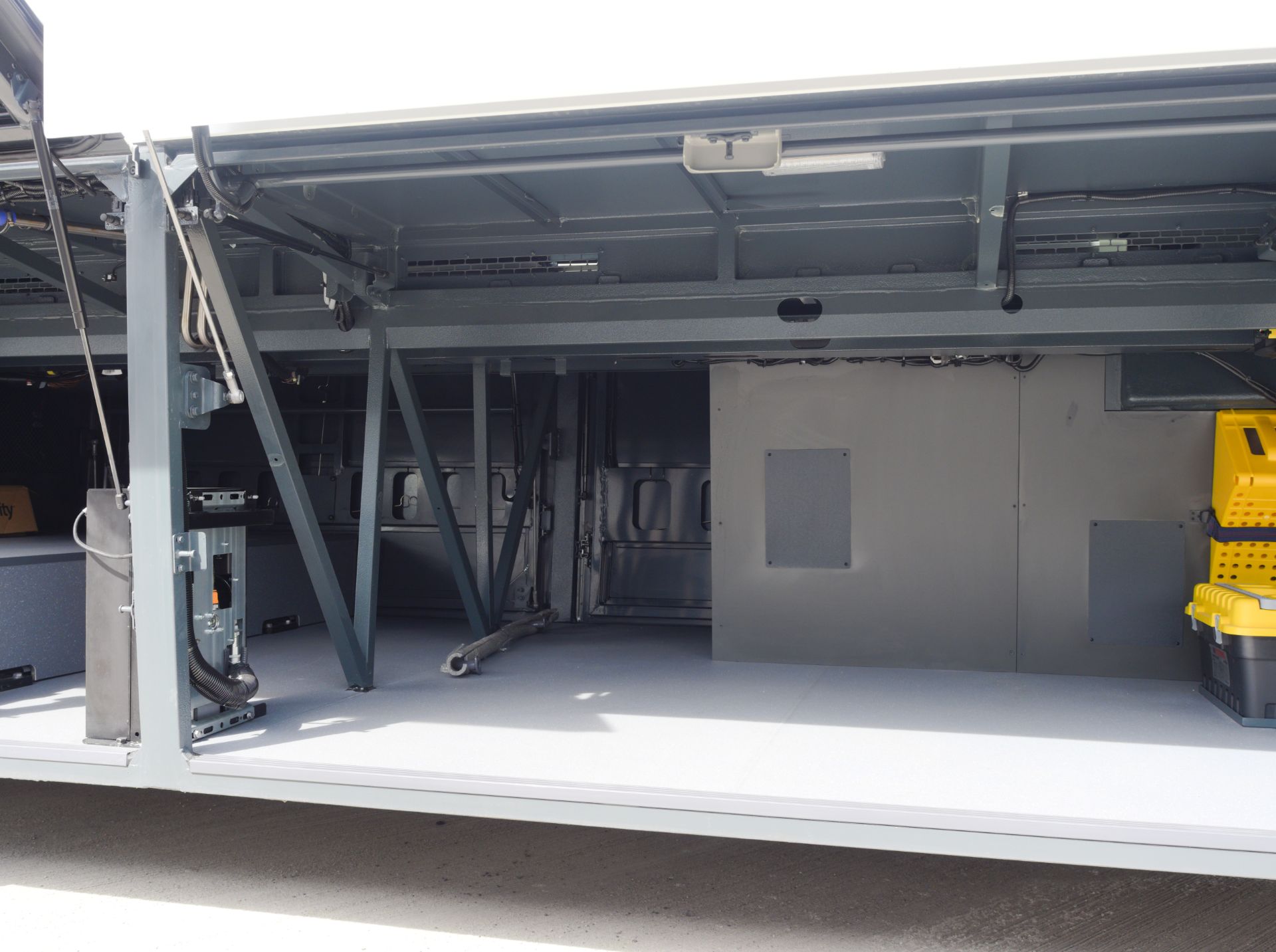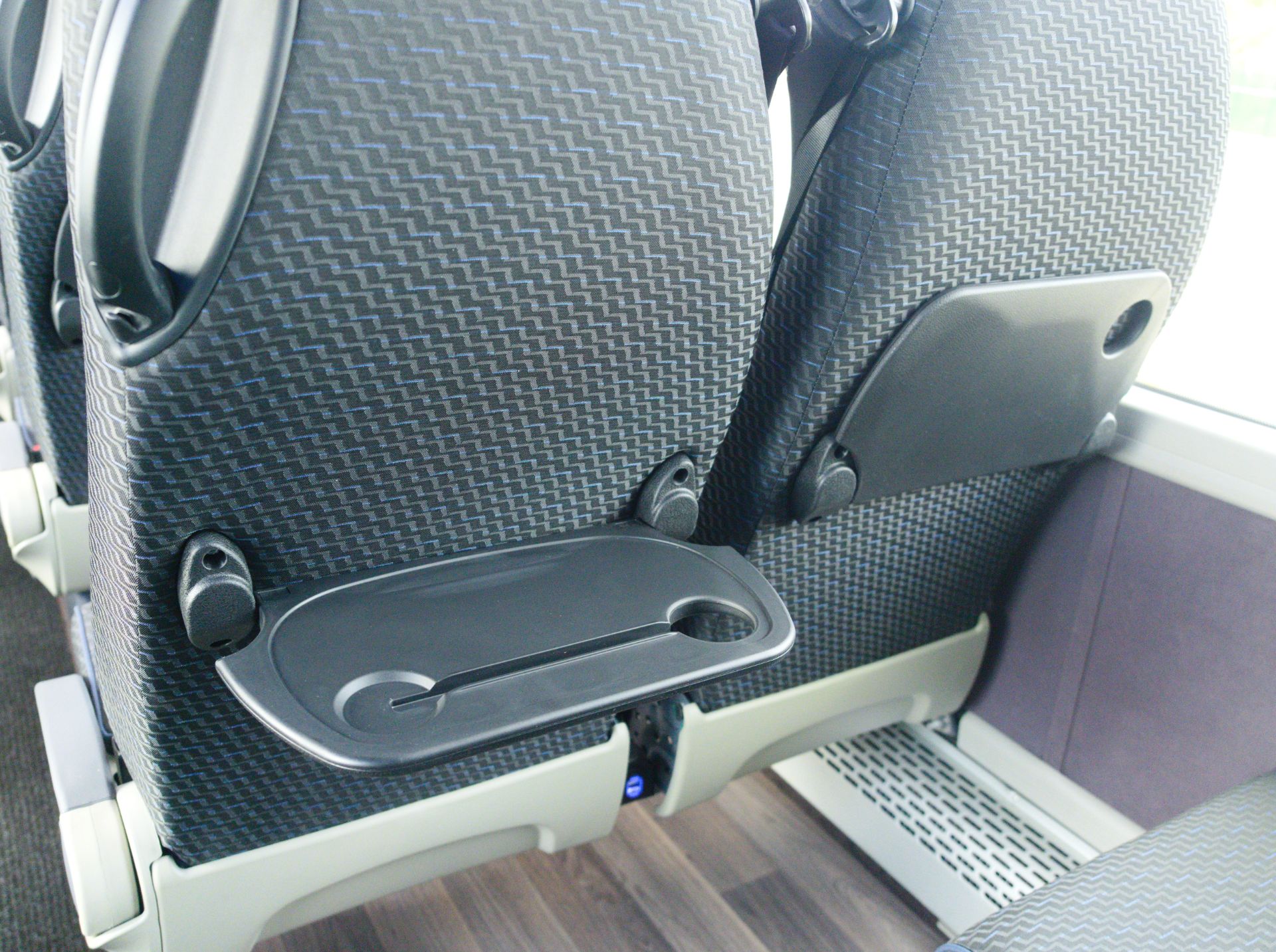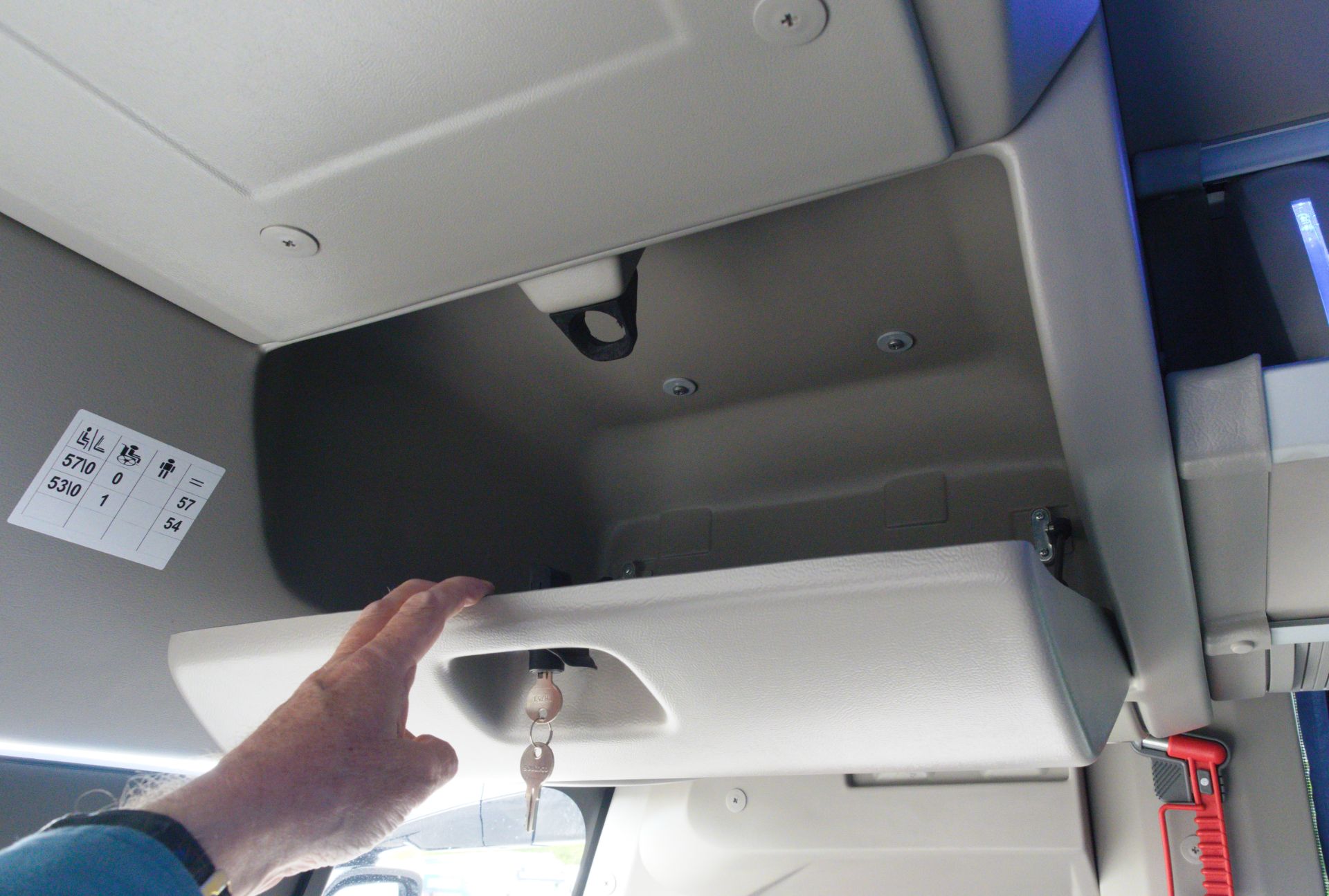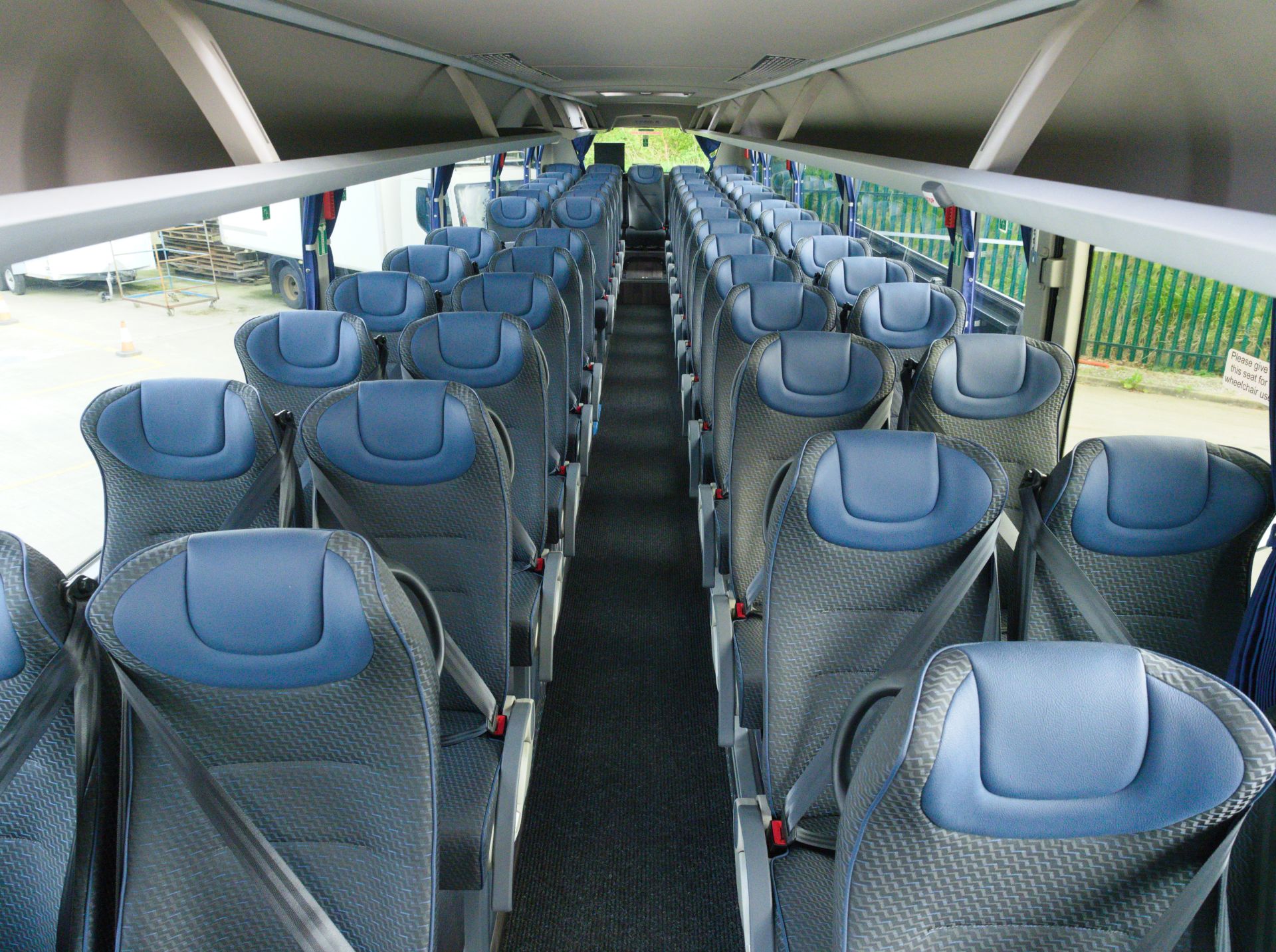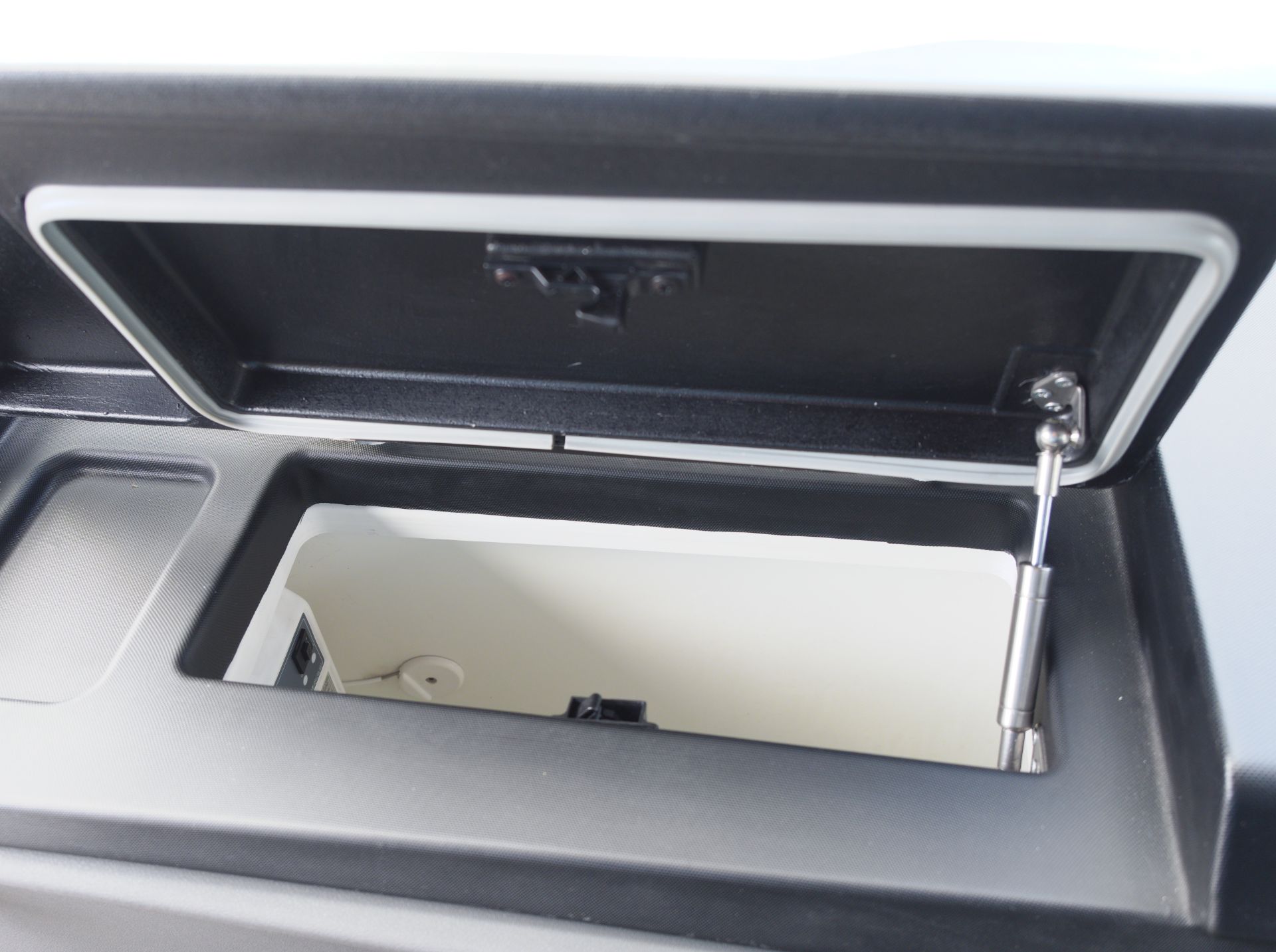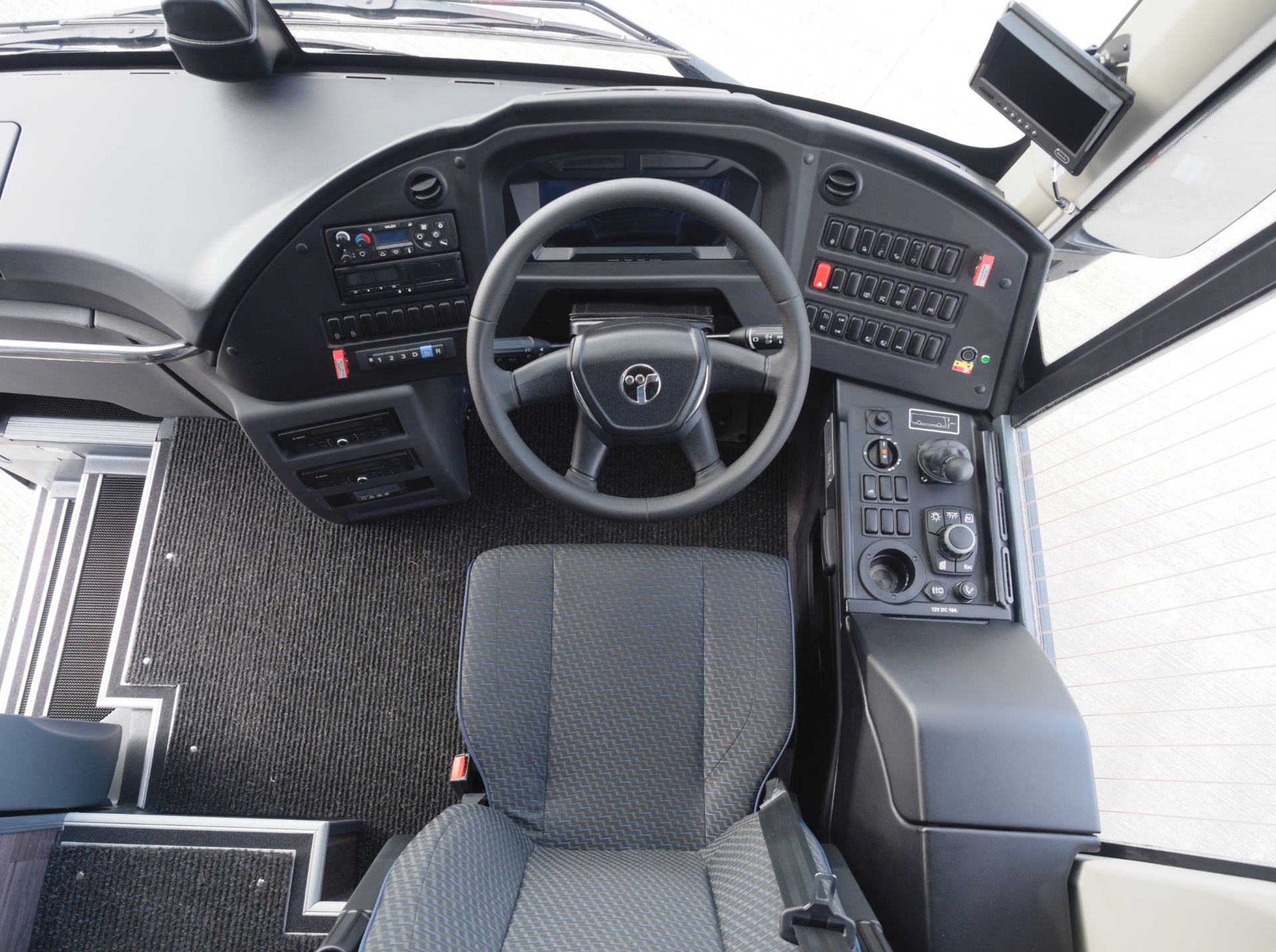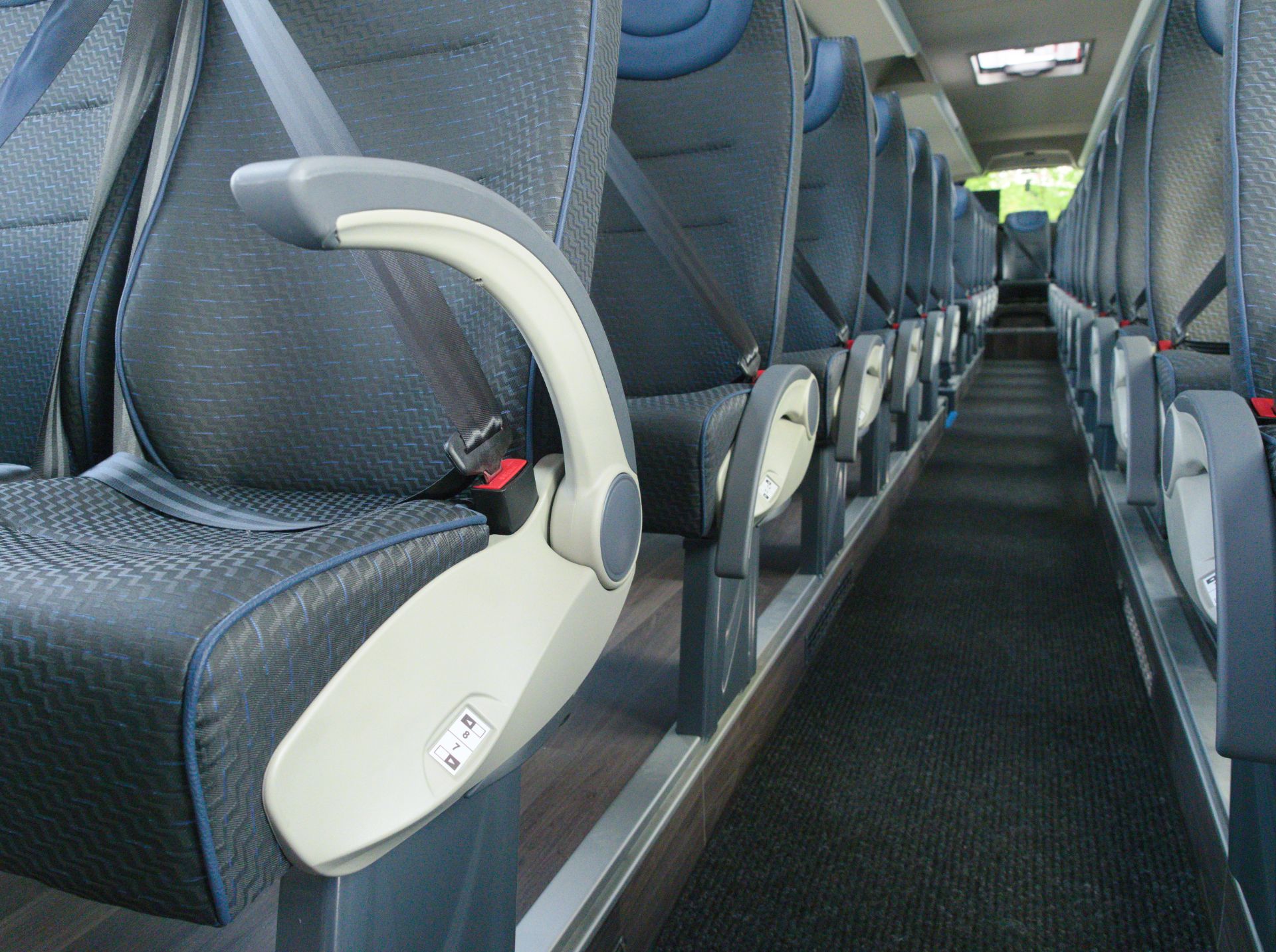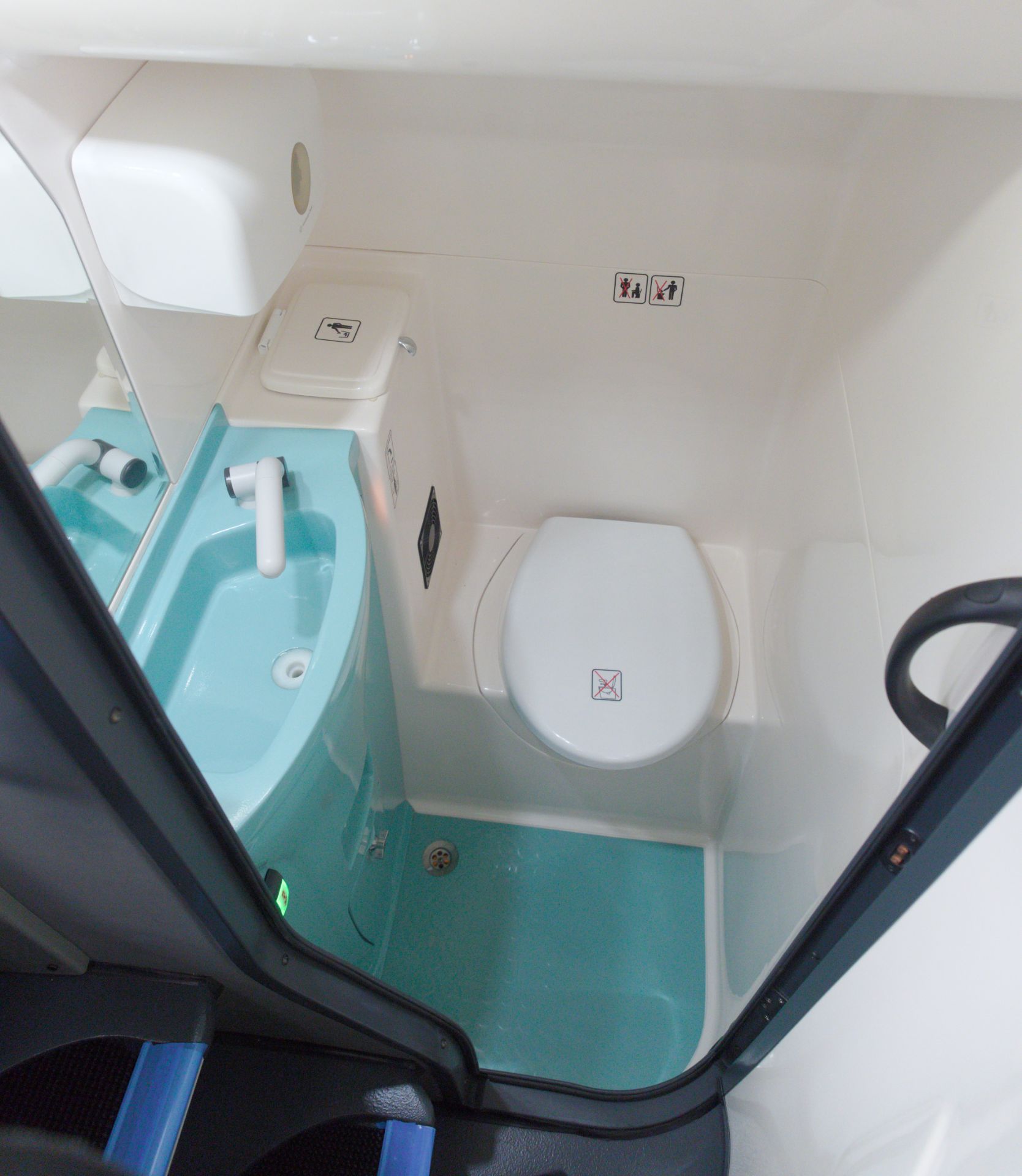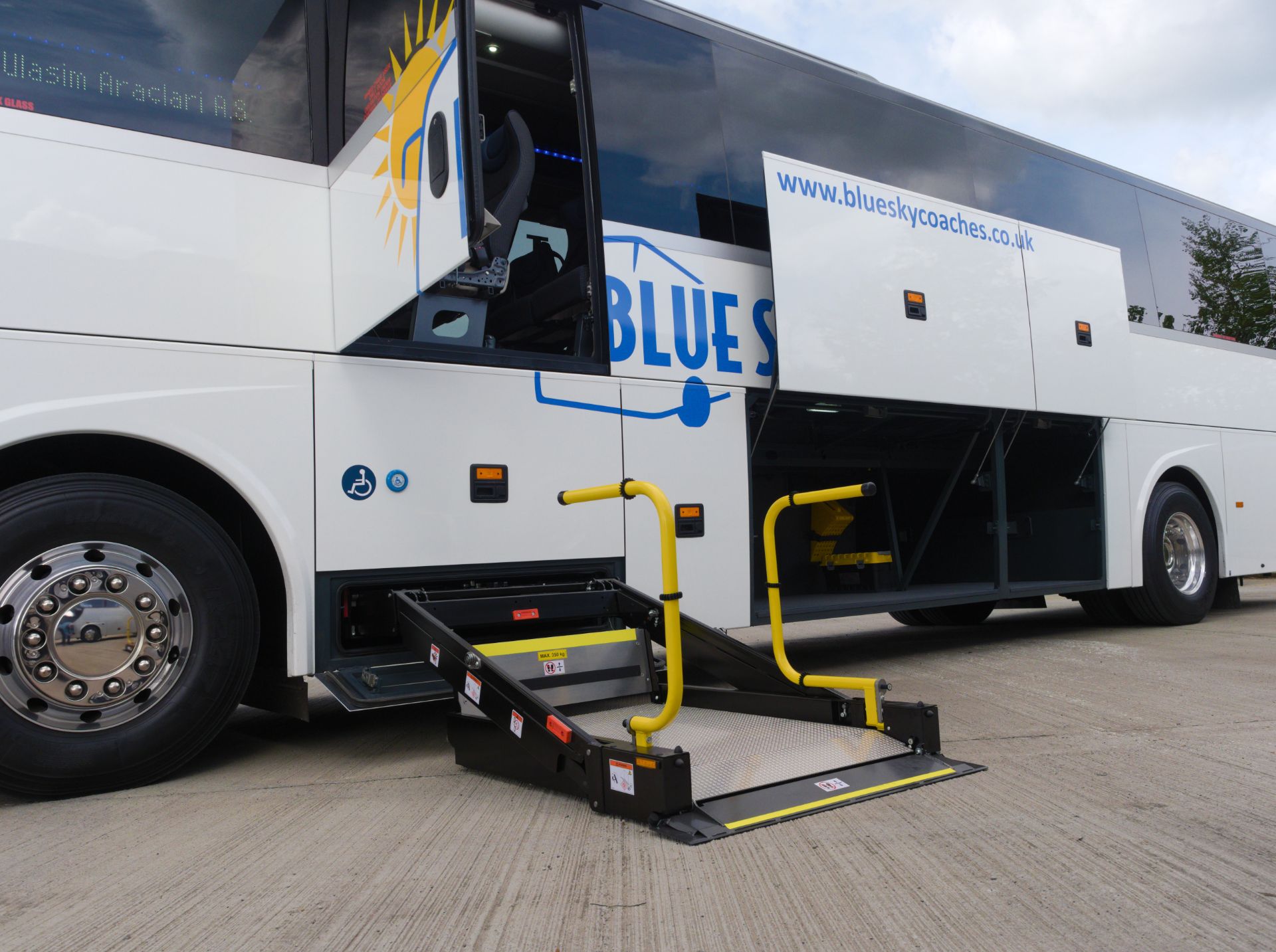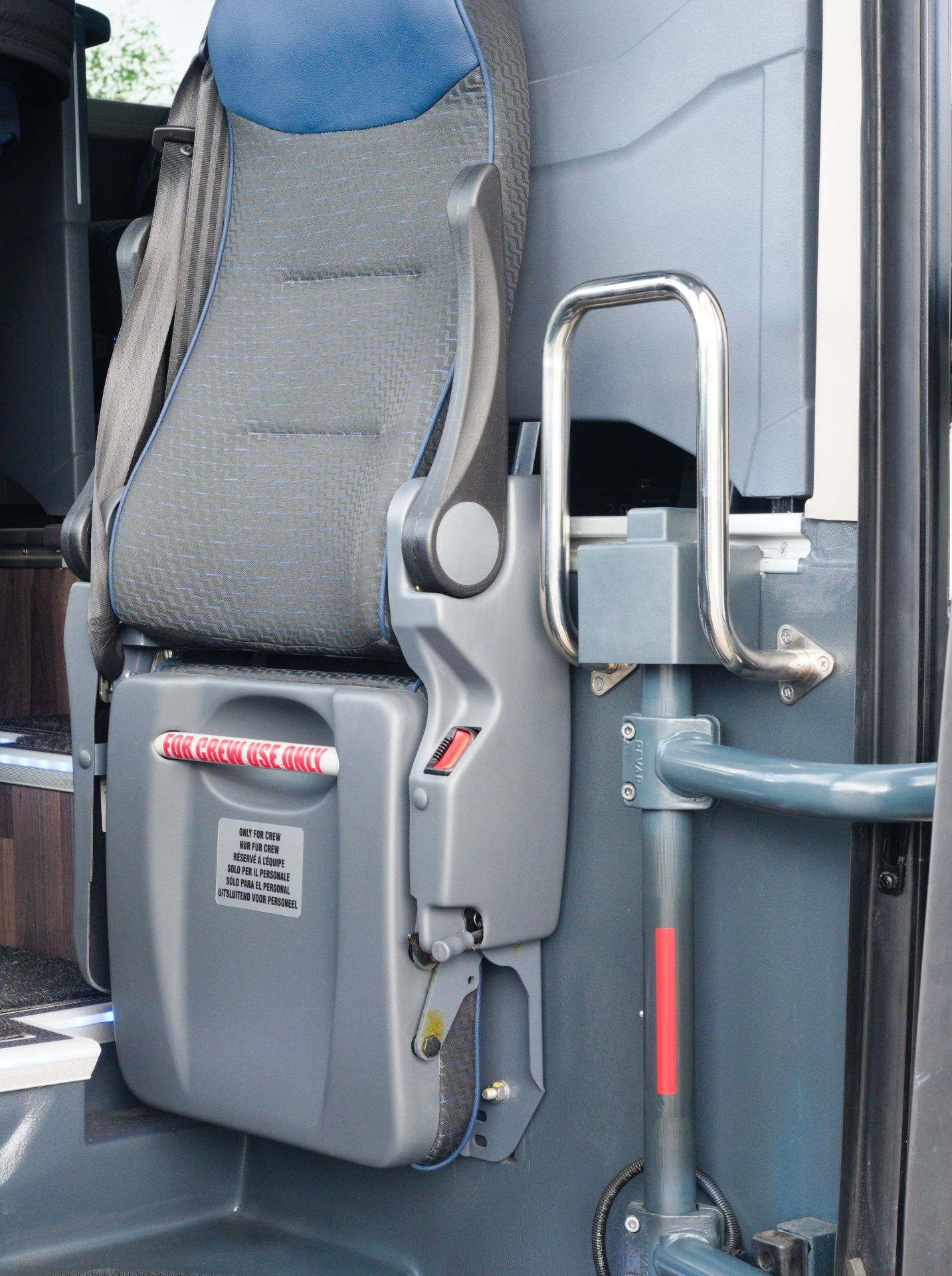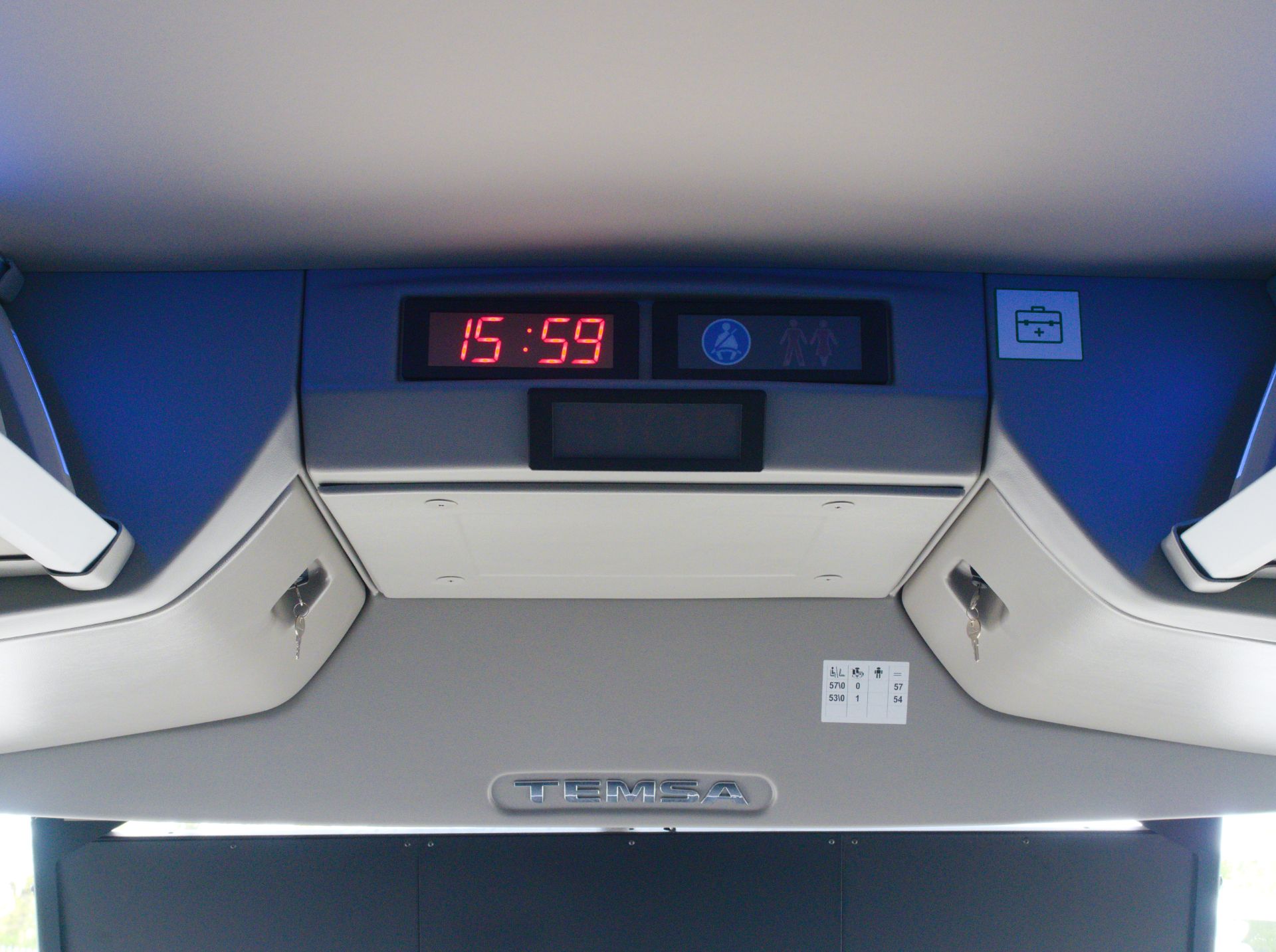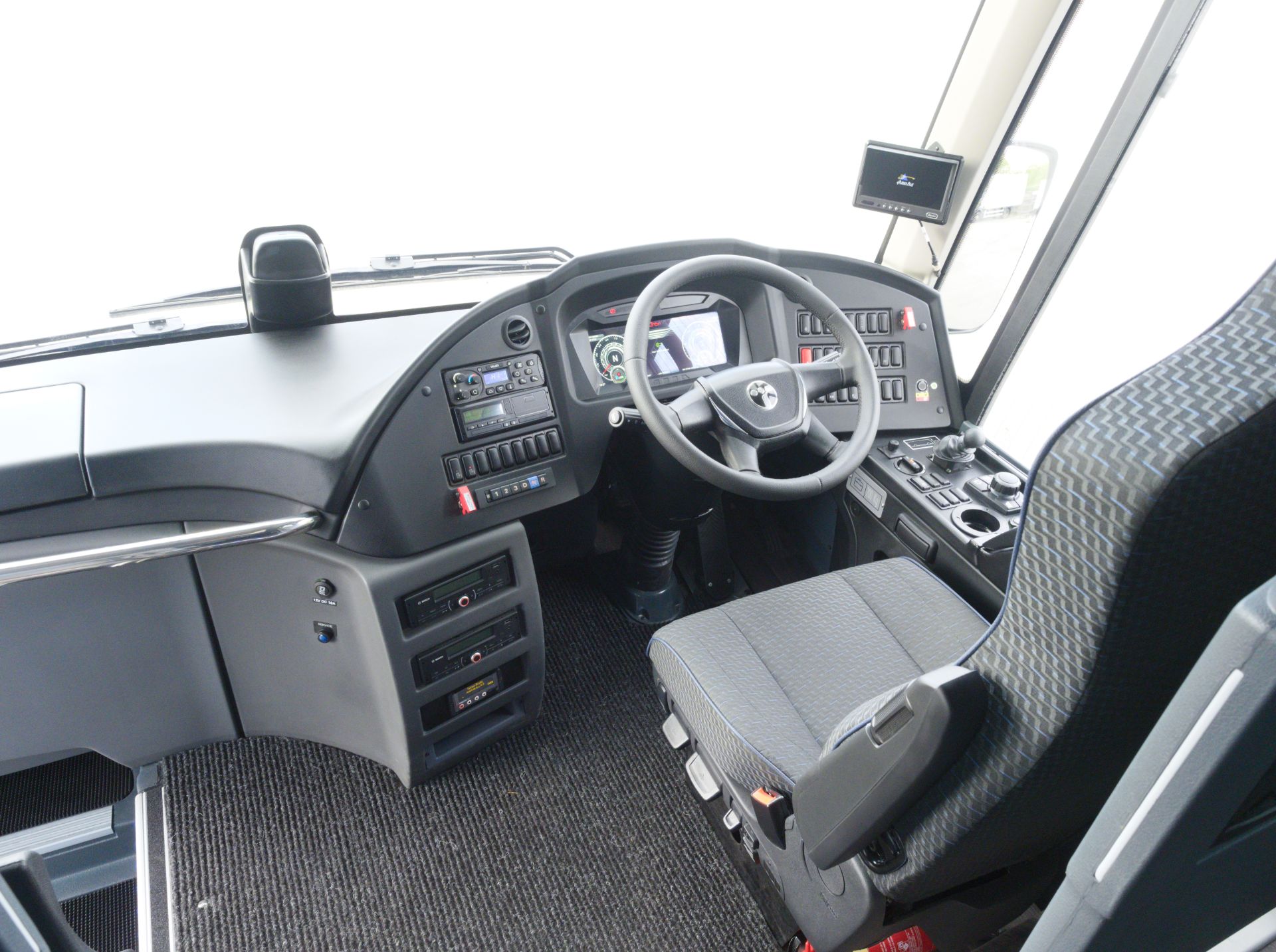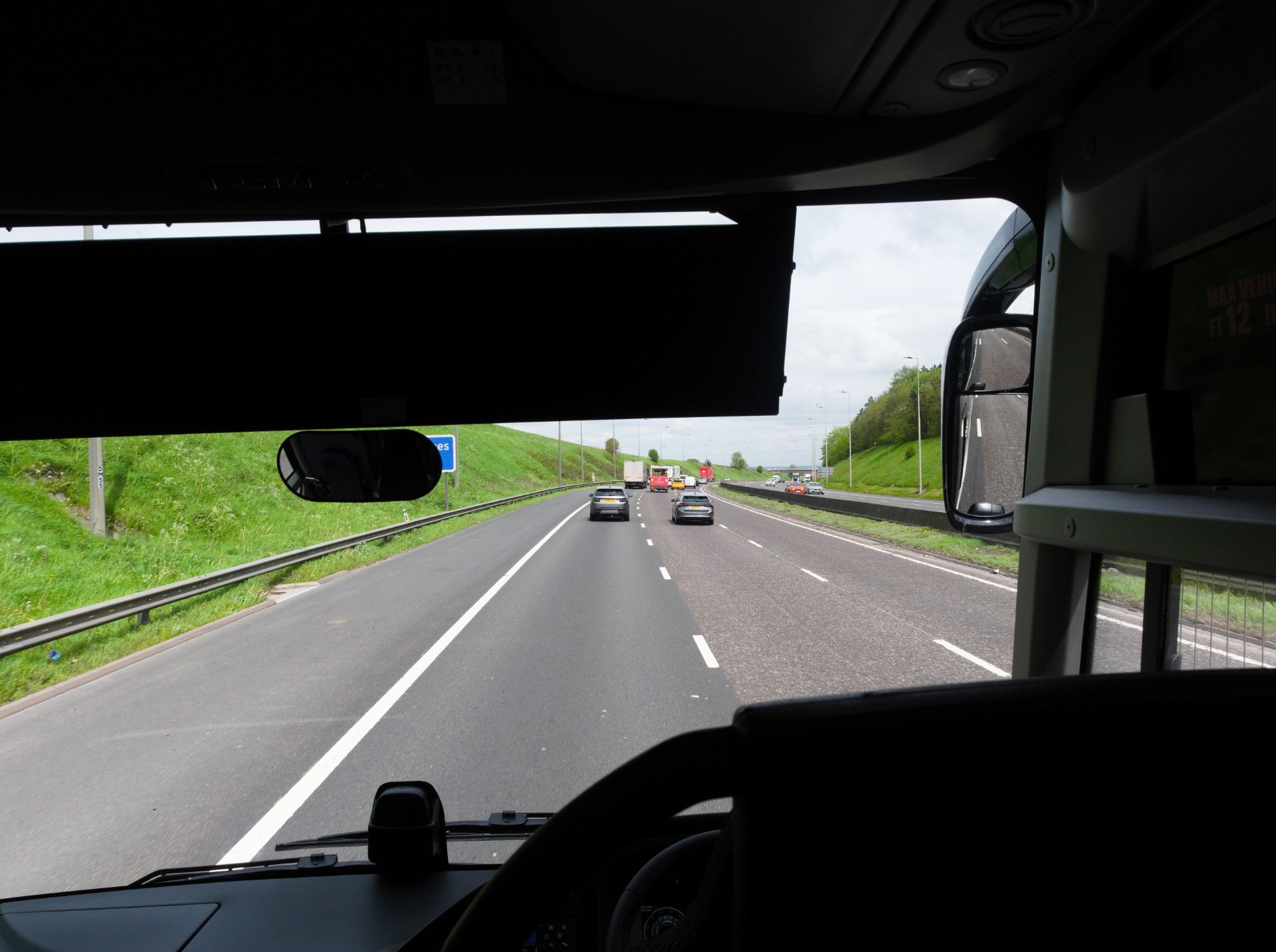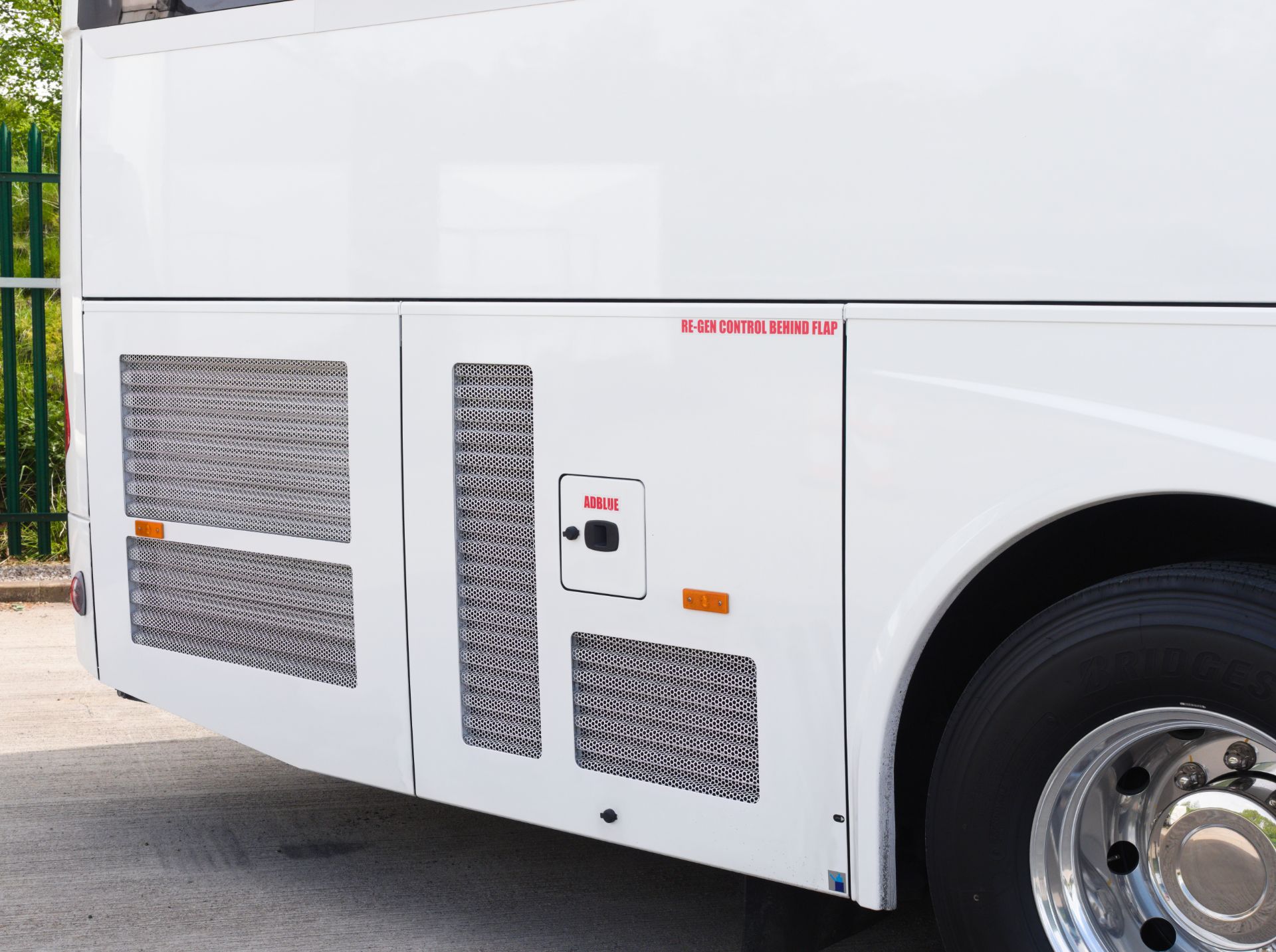Going the extra metre
The rebirth of the Temsa brand in the UK brought with it a new model which we’ve been trying to get on road test for months. At last, here it is – a great-value 13-metre, two-axle coach. But can it stand up to the competition?
Access the gallery of photos by clicking the banner image above
There’s a sweet spot for two-axle coaches which attains the highest seating capacity without sacrificing the toilet and Temsa’s new HD13 is right in it.
The HD12 is, of course, already a well-known, moderately priced tourer which has a great many supporters in the industry. It runs with a well-liked DAF engine and ZF gearbox combination, and gets to 53 seats without losing too much legroom. But the extra metre offered by its 13-metre sister gets it to 57 seats, and that’s important.
So important, in fact, that since it began importing the HD13, Temsa’s operation at Cleckheaton – featured in the 21 May issue – has been taking orders at such a pace that it’s not been able to keep a demonstrator in stock. Thankfully, Blue Sky Coaches of Leeds had one passing through the dealership and kindly volunteered it for a shake-down with Coach Stig at the wheel. It went into its working life hours after we tested it.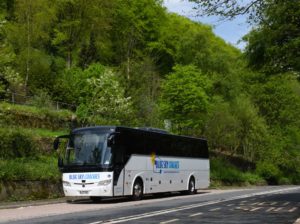
We tested HD12 way back in 2018 in its original guise. Since then, it’s had an extensive redesign, shown at the coach show in 2019 before its then importer, Arriva Bus & Coach, fell by the wayside. We liked it then, especially at the price. The HD13 was a real ‘must see’ for us, though we’ve had to wait a few months, such was the throughput at Cleckheaton.
Exterior
Temsa’s reworking of the model range really has worked throughout the models, getting sufficient styling cues for HD13 to look interesting with none of the extremes which could potentially date the design.
Sure, it isn’t tearing up any trees but it still has the look of a modern coach, with some nice flourishes around the panel gaps and sharp-looking light clusters. The front of the coach has four panels, including practical lower corners which are separate from the headlamp cluster, and a deep windscreen. On the test example, standard mirrors are used though video mirrors will be an option.
The offside has some attractive wheelarch panels with swage lines over, and otherwise simple panels with a trim strip below the stretch panels. Running beneath the windows and swooping down at the front there’s a brushed steel trim – in our view, it would look better in chrome. At the rear offside, the cooling pack has several mesh panels for ventilation and the AdBlue filler cover. There’s a fuel filler both sides of the coach at the B pillar position.
The offside passenger door is excellent, with a nice moulding for the stairwell. The six steps are not over-steep and the door not too narrow despite slight intrusion from the toilet unit. By the way, the blue nosings in the photos are protective film – the nosings are white.
The rear is where a lot of work has gone in, with now fewer than seven lower panels (if you include the engine cover) and the vulnerable lower corners separate. Two louvred cut-outs are sited in the engine cover, and the rear window is rhomboid rather than square. The rear light clusters are shaped to echo the engine louvres. It’s all very neat.
Moving round to the nearside, the coach is pretty much the same. In white paint, we did feel that the black locker door handles intruded on the otherwise clean lines; colour-matched to the paint, they would look better, though in a darker livery they wouldn’t jar so badly. The lockers themselves are very spacious at 11m3 and barely compromised by the fitment of the Dhollandia wheelchair lift just behind the front wheelarch. The locker doors themselves are realty solid items and closed perfectly and positively.
Interior
The passenger door is a good width, again with a nice stairwell moulding, and four, even steps up to driver level.
There’s a stainless steel grab rail on the left and, on the right, the courier seat stows nicely, with a footrest inset opposite. On the dash is the fridge. The gas strut on the test example had a slightly loose and rattly ball joint end, though it was perfectly functional. To the courier’s right is a 10A accessory socket.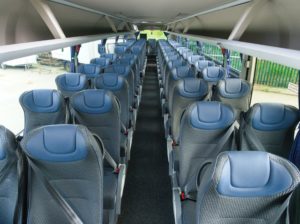
Either side of the roof moulding which houses the clock and, if fitted, the monitor screen, Temsa has installed two drop-down lockers. We thought these are particularly useful and a good way of filling a void. They are sprung to the closed position.
At driver level, there’s another step up to the sunken saloon aisle. The coach has wood-effect flooring throughout plus aisle carpets. Decency screens are both in a ‘soft feel’ plastic. I should mention here that the slightly odd screen panel above the driver window is due to be revised to another pane of glass. I note that it gives only the height in imperial ft/ins; it needs the height in metres, too, though I did notice the diagram on the switch panel to the right of the driver, which gives this figure.
The floor around the aisle step is cut a little angular and ‘bitty.’ I understand that a restyling here could be in prospect, though it’s no deal breaker.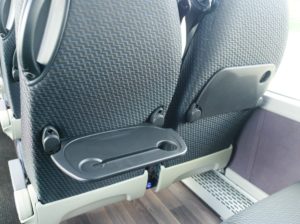
The Inova seats in the test example are easy-clean fabric with leather headrest inserts. The have drop-down tables complete with a phone/tablet slot and cup holder. Magazine nets are an option. Temsa has opted to place its two USB sockets between the seats in front of the passenger – a better option, we think, than between the seat squabs. Overhead, passengers have a very nice service unit including reading light and call button, and a very usable overhead rack, which is lined with fabric to avoid rattles.
The coach has pleasingly few seat pairs with the view obscured by pillars. The wheelchair lift door does create a bit of an obstruction but on the whole, serendipity has worked in the coach’s favour with regard to where the seat pairs fall. Likewise the seat spacing, which is generally excellent throughout, with no seats with unduly reduced legroom.
The centre stairwell and toilet arrangement is nicely done. It’s not the widest but more than adequate. The toilet on Blue Sky’s coach has sky blue basin and flooring; maybe not to everyone’s taste but I liked it.
At the rear, the aisle has a step to the rear seats and an inspection cover set into the floor. Again, it’s a little utilitarian in appearance but doubtless strong and functional. In the rear window is the Hanover destination box.
On the subject of destination displays, the front Hanover unit fitted in this vehicle is a simple, flat box and does intrude into the forward view fairly significantly. Paul Gardner and the TSUK team is aware of this and is pressing for a curved destination disply, perhaps, which will be less intrusive.
As always, I had a crawl beneath the seats. The convector heaters that run the length of the floor sit a niggling inch or so above the floor –a potential dust trap, as was a little gap I found on the front offside. On some other coaches, the shroud around the heater elements is extended downwards and screwed to the floor, eliminating this.
Incidentally, Temsa very sensibly pre-wires its coaches for CCTV, so if you anticipate this being needed either at order or in a second life, it’s not the fag it could be.
I’ve said little about the PSVAR aspect of this vehicle, as I am sure operators all know the score; it’s a box ticked, and although it is unlikely that the wheelchair lift will ever be used in anger, it can be in theory, and that’s the level at which PSVAR seems to be pitched. Nuff said.
On the road
The Coach Stig was very impressed with the driving environment, and especially with the low dashboard which offers a clear impression of where the front corners of the coach are.
The dashboard itself is refreshingly ergonomic, with switch clusters in a logical position. The gear selector is on the left and, above it, the tachograph and Valeo climate control: “This is perfect. Positioning the tachometer lower down is inviting breakages. Here it is safely out harm’s way and can be clearly seen.” The door open switches are to the left, the rest of the switches to the right.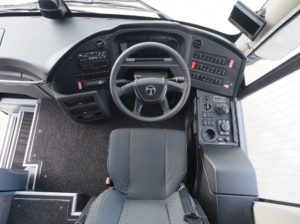
The panel immediately under the driver’s right hand has lighting controls and the handbrake, and behind it is a capacious locker…and an ashtray. The Stig felt the large locker did cramp his elbow room a bit. There’s a coat hook slightly behind and above the driver’s seat, and the driver has twin electrical sunblinds. Blue Sky has opted for a reversing camera, with the screen mounted to the A pillar.
All of the main dials are incorporated in the centre binnacle: “I like this dashboard. It’s not too high. The centre binnacle is very easy to read and not too cluttered. The mirrors are clear of anything to obstruct the view,” the Coach Stig commented.
Out on the road, the HD13 turned out to have impeccable manners: “The steering is really nice,” said our test driver. “I’m getting just the right amount of feedback from it, and not having to make too many corrections; this coach does go in straight lines very well.” The ride itself was also good, with no choppiness over undulations or see-saw which can be a feature of the ride on a hefty two-axle coach. We say ‘hefty’ but actually the HD13 tips the scales at an acceptable 13.2 tonnes, leaving plenty for luggage and passengers.
The 408hp MX11 and EcoLife combination is really familiar to us; it delivers steady, step-free progress and brisk acceleration, and has the torque to sail up long inclines. It ‘feels’ frugal because, on the limiter, the tachometer is sitting at 1,000rpm. Kick-down, said Coach Stig, wasn’t over-dramatic but meant it held a lower gear for longer. He felt the gearbox (the coach was set to its economy mode) did hold a higher gear for too short a time.
The coach is switchable from economy into a performance mode, the switch out of reach in one of the lockers. Most operators will want it kept in economy though, when we tried the performance setting, it was hardly a step change; it just offered a little more performance and held gears a moment longer.
Road noise is very well controlled, with just a little wind noise above the driver’s head – we suspect from the odd little ventilation box and filter which is due for revision. There is a tendency to get road noise in the seats opposite the centre stairwell but this wasn’t in evidence, and nor was there any transmission whine at the rear.
“The throttle is quite instant,” said our test driver. “It just needs a touch to get it moving. But that doesn’t make it difficult to drive. In fact, because the dashboard is simple and logical, you could drop any driver in this and they’d know where they are.”
Verdict
In so many ways, this is a familiar product. The driveline is tried and tested, and the Temsa marque has built a reputation for, at the very least, good value for money.
Temsa – which builds 11,500 vehicles a year – is now stabled with a new UK dealership set-up… a full-service, one-stop business which provides the kind of reassurance that operators want when investing in a coach. Our visit to Cleckheaton revealed a team of people committed to sticking with the product beyond the sale.
HD13’s stablemate, HD12, has found a number of devotees for whom the Temsa name means value-for-money vehicles and will relish the extra seats as a boon to profitability. But that’s not to say that their customers will be getting shortchanged as a result.
We liked HD13. It seems well bolted together and performed in line with the familiar driveline’s promise. The passenger environment was very good, with the minor caveats we have mentioned, and this coach is well up to touring duties at any level. The ride was pleasant and the seats had ample legroom. Anyone in the market for a two-axle 13-metre coach should definitely have this on their shortlist, and should take the trouble to check out what’s developing at Cleckheaton.
Temsa Sales UK
Lodge Garage, Whitehall Rd W, Gomersal, Cleckheaton BD19 4BJ
P 0113 526 5420
W www.temsa.com/uk/en
